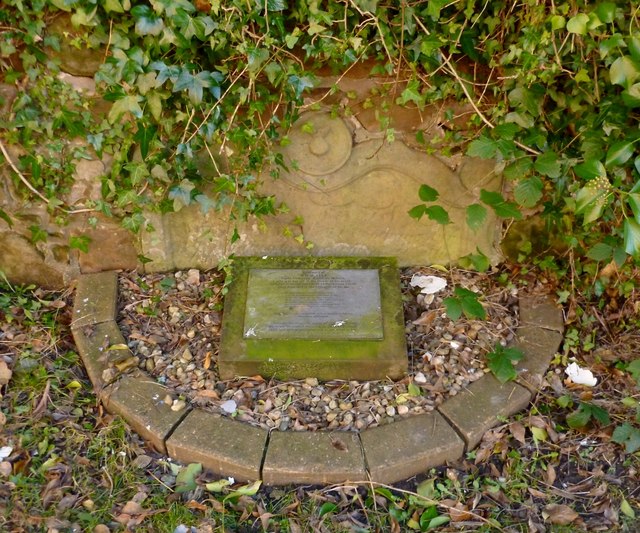Gravestone of William McAlla
Introduction
The photograph on this page of Gravestone of William McAlla by Lairich Rig as part of the Geograph project.
The Geograph project started in 2005 with the aim of publishing, organising and preserving representative images for every square kilometre of Great Britain, Ireland and the Isle of Man.
There are currently over 7.5m images from over 14,400 individuals and you can help contribute to the project by visiting https://www.geograph.org.uk

Image: © Lairich Rig Taken: 21 Feb 2013
For context, see Image Like the other stones in this passage, the one shown in the present photograph is partly buried. The modern metal plaque gives the inscription; however, as I had suspected from the rhyming scheme, it has omitted a whole line (the third line) of the verse, and it contains numerous typos in the other lines. In the following, I have therefore relied instead upon the accurate transcription that is given in the book "Dumbarton Parish Church in History" (David Wilson, 2004): "In memory of William McAlla, Light Company, Ayrshire Militia, who was cut off in the flower of his youth by a fall from the East Rock of Dumbarton Castle, 26th June 1812, in the 24th year of his age. No more the shrill reveille shall convey Unto his breathless corpse the dawn of day, No evening drum will beat To him the tidings of the sun's retreat; No more he'll breathe the sweet salubrious gale, Nor listen more to love's unwearied tale, Nor tune the pipe to nature's charming choir, Nor yield again to youth's ecstatic fire. This stone was erected in his memory by his brother officers." The plaque also mentions that Dorothy Wordsworth visited the area on the 20th of September 1822, and thought the verse on this stone to be rather poor. The book by David Wilson that is cited above provides more details: the occasion was Dorothy Wordsworth's second tour(*) in Scotland. Dorothy had arrived in Dumbarton by boat, had breakfasted at the town's Elephant Hotel (on which, see Image), and then made her way along the High Street to the parish kirkyard. She found it to be rather overgrown and poorly tended, but it was nevertheless a pleasant place in which to sit and look out over the River Leven. Dorothy noticed this stone (which would have been fully exposed to view at the time), mainly because of the verse on it. The stone's carvings include a thistle, an anchor, and a square and compasses; the thistle can be seen at the top of the stone. Oddly, an adjacent gravestone is that of Charles Kerr, private, a soldier in the 72nd Regiment, Duke of Albany's Own Highlanders, who died on the 21st of May 1825, aged 24. He was killed in much the same manner as William McAlla, by a fall from the north east side of Dumbarton Castle. (*) Dorothy's first tour in Scotland took place in 1803, when she was accompanied by her brother William and the poet Samuel Taylor Coleridge. They had also visited Dumbarton on that occasion. Amongst other places, they explored Dumbarton Castle, and they also walked around the base of the Rock at low water; see Image and Image

